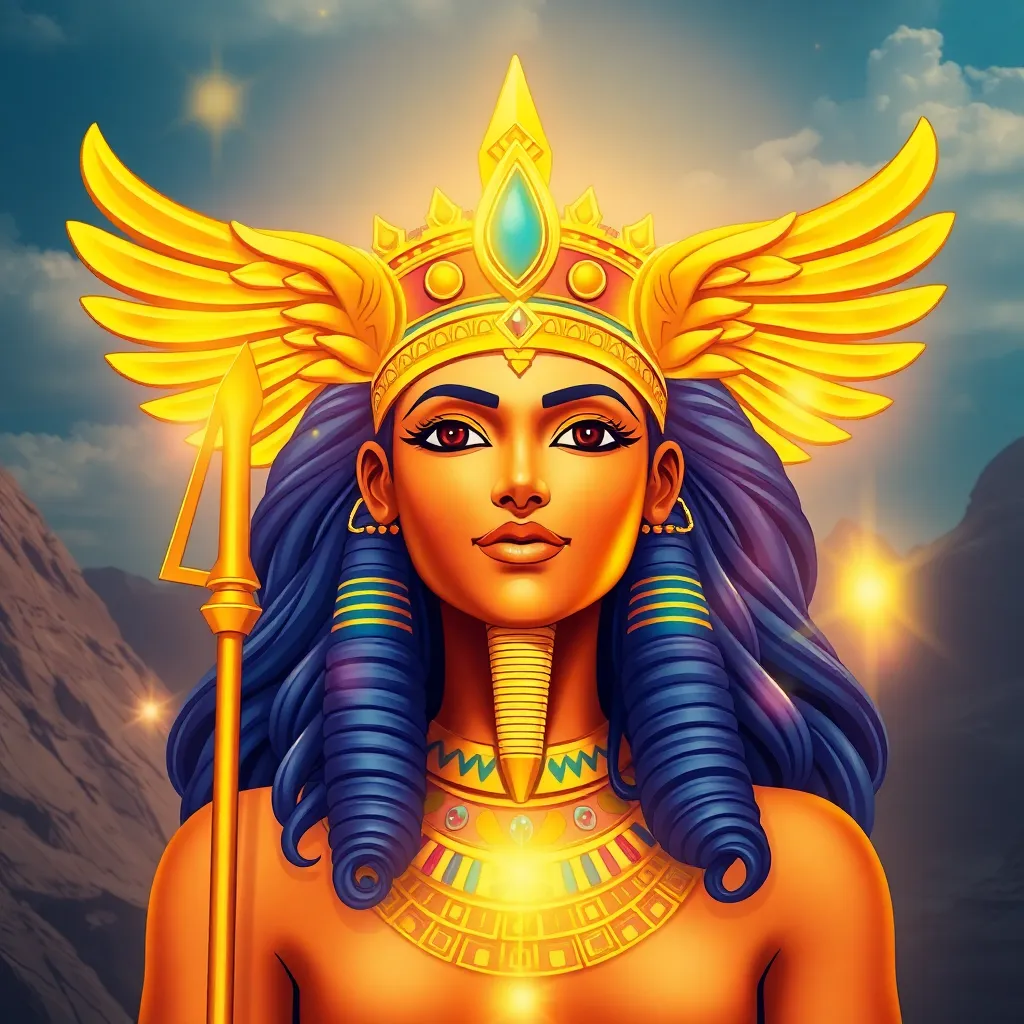The Role of the Goddess Hathor: Joy and Love in the Cosmos
I. Introduction
The ancient Egyptian goddess Hathor holds a significant place in mythology as a deity of joy, love, and cosmic harmony. Revered for her nurturing qualities and celebratory spirit, Hathor embodies the essential human experiences of happiness and affection. Her influence is deeply woven into the fabric of ancient Egyptian spirituality, where joy and love are considered vital for both personal and societal well-being.
This article aims to explore Hathor’s multifaceted role in Egyptian mythology, focusing on her association with joy and love. We will delve into her historical background, her significance in ancient culture, and her cosmic connections, while also discussing contemporary interpretations and practices inspired by her legacy.
II. Historical Background of Hathor
Hathor’s worship dates back to the earliest periods of ancient Egyptian history, evolving significantly over millennia. Initially, she was associated with music, dance, and fertility, but her role expanded to encompass motherhood, beauty, and joy.
- Origins: Hathor is often depicted as a cow goddess, symbolizing nourishment and motherhood. Her name translates to “House of Horus,” indicating her connection to the divine.
- Evolution: Over time, Hathor became linked with the sun god Ra and was worshiped as a celestial goddess, embodying the cosmic aspects of motherhood and love.
Key symbols associated with Hathor include:
- The cow, representing fertility and nurturing.
- The sistrum, a musical instrument symbolizing joy and celebration.
- Mirrors and jewelry, reflecting her association with beauty.
Major temples dedicated to Hathor include:
- The Temple of Hathor at Dendera, renowned for its elaborate carvings and astronomical representations.
- The Temple of Hathor at Serabit el-Khadim, an important site for turquoise mining and worship.
III. Hathor as the Goddess of Joy
Joy occupies a central position in ancient Egyptian culture, seen not only as a personal experience but also as a communal one. Hathor, as the goddess of joy, was invoked during various celebrations and festivals that highlighted the importance of happiness in daily life.
Festivals dedicated to Hathor included:
- The Dendera Festival, where music, dance, and offerings celebrated her divine essence.
- The Feast of the Cow, honoring her role as a mother and provider.
Artistic representations of joy linked to Hathor often depict her dancing, playing the sistrum, or embracing her worshippers, symbolizing the joy she brings to those who honor her. Her imagery reflects the exuberance of life, emphasizing the importance of joy as a divine gift.
IV. Hathor as the Goddess of Love
In ancient Egyptian society, love was multifaceted, encompassing romantic love, familial bonds, and companionship. Hathor was revered as a goddess who nurtured these connections, playing a significant role in relationships, marriage, and fertility.
Hathor’s influence on love is illustrated in various myths and stories:
- Her role as a mediator in romantic relationships, often helping lovers unite.
- Her association with fertility, as couples prayed to her for blessings of children.
One famous myth involves Hathor’s journey to bring joy and love to the world, showcasing her ability to foster connections and heal emotional wounds through her nurturing presence.
V. Hathor’s Cosmic Significance
Hathor’s significance extends beyond the earthly realm into the cosmos. She is often associated with the stars and celestial phenomena, reflecting her role as a cosmic mother and guardian of the universe.
Her connection to the cosmos is seen in the following ways:
- Hathor is linked to the Milky Way, often referred to as the “Celestial Cow,” representing the nurturing aspect of the universe.
- She is involved in the cycle of life, death, and rebirth, guiding souls through the afterlife and ensuring their safe passage.
Hathor’s influence on the afterlife emphasizes her role as a protector, assuring that love and joy continue beyond physical existence, thus promoting spiritual journeys filled with light and happiness.
VI. Modern Interpretations of Hathor
Today, Hathor remains relevant in contemporary spirituality and goddess worship. Her attributes of joy and love resonate with many seeking emotional and psychological healing.
Modern interpretations of Hathor manifest in various ways:
- Goddess worship circles often celebrate her qualities, incorporating her teachings into spiritual practices.
- Psychological connections to joy and love are explored through her archetype, inspiring individuals to cultivate these feelings in their lives.
Hathor also appears in popular culture and literature, symbolizing the enduring legacy of joy and love across time and space.
VII. Rituals and Practices Associated with Hathor
Throughout history, rituals honoring Hathor have celebrated her attributes of joy and love. Ancient Egyptians engaged in various practices to connect with her divine essence.
Some ancient rituals included:
- Offerings of food, music, and dance at her temples during festivals.
- Personal prayers and invocations for love and happiness in daily life.
In modern spirituality, practices inspired by Hathor’s teachings may involve:
- Creating altars dedicated to her with symbols of joy, such as flowers and musical instruments.
- Participating in meditation and visualization exercises to connect with her energy and manifest love in one’s life.
Many individuals share personal anecdotes of spiritual experiences that deepen their connection with Hathor, highlighting her transformative power in their lives.
VIII. Conclusion
Hathor’s enduring legacy as the goddess of joy and love continues to resonate with people across cultures and time. Her role in promoting harmony within the cosmos underscores the importance of these emotions in both spiritual and earthly realms.
As we explore our connections to joy and love through the lens of Hathor, we are reminded of the beauty and warmth these feelings bring to our lives. We invite readers to delve into their own experiences, seeking to embody the joy and love that Hathor represents, nurturing these qualities within themselves and their communities.




